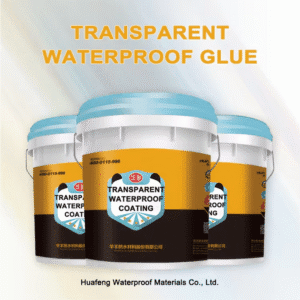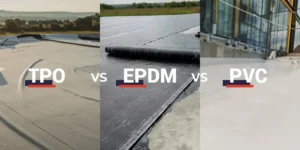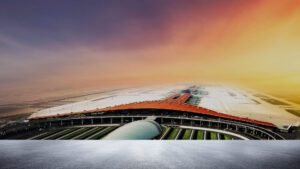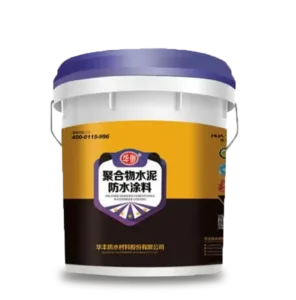As winter slides in and mercury drops, sticking modified-bitumen roof sheets becomes a real headache we cant brush aside. Every choice , from the asphalt polymer we select to the way the crew rolls and sets the laps, determines how well a roof can shrug off snow, ice, and punishing wind. At Huafeng Waterproof Materials Co., Ltd. we examine each detail so our roofs shelter people dry and safe through the whole cold season.
Why Modified Bitumen Membranes Matter in Winter
Roofers trust modified-bitumen membranes. They stay pliable, resist ponding water, and bond well to most decks. These features are crucial during winter storms. Cold air reveals flaws hidden in mild weather. Low-cost or mismatched products often fail. Choosing the right polymer blend is essential. Reinforcing fabric must be appropriate. Seam details need careful attention. This helps the membrane stick, flex, and seal in freezing temperatures.
Types of Asphalt Modifiers
The two most common modifiers used in modified-bitumen membranes are Atactic Polypropylene (APP) and Styrene-Butadiene-Styrene (SBS)-each suited for different climates:
-
APP Modified Bitumen:
APP behaves like a plastic polymer, offering a higher softening point and excellent UV and weathering resistance. It stays rigid below zero, loses toughness if it freezes, so it shines in warm southern regions where heat and sun do most of the damage. -
SBS Modified Bitumen:
SBS is a rubber-like polymer that provides enhanced flexibility and “memory,” allowing the membrane to recover its shape after deformation. This makes SBS-modified membranes more suitable for northern regions and cold climates, where low-temperature flexibility prevents cracking and damage.
Reinforcement Types for Enhanced Performance
The reinforcement layer inside modified bitumen membranes adds strength and stability. Modern membranes typically use one of three types:
-
Polyester Reinforcement:
Composed of longer, more flexible polyester fibers, this type offers excellent elongation and puncture resistance—helpful during building movements and thermal cycling. -
Fiberglass Reinforcement:
Made of shorter, rigid fibers, fiberglass provides higher tensile strength and is non-flammable, with strong resistance to heat and fire. -
Composite Reinforcement:
A hybrid of polyester and fiberglass fibers, composites combine strength and flexibility, though they tend to be more expensive.
Application Methods for Cold Weather
Different installation methods come with their own advantages and limitations in cold weather:
-
Self-Adhered (SA) Membranes:
These have a built-in adhesive layer that activates upon application, allowing for quick and easy installation without the need for additional adhesives or torches. SA membranes are particularly convenient in colder weather to avoid heating hazards. -
Cold/Hot Applied Membranes:
Traditional methods that use hot asphalt or cold adhesives to bond membranes. These methods are sensitive to temperature and curing times, which can slow down installation during winter. -
Heat-Welded Membranes:
Use a torch or heat gun to bond the membrane edges. This method requires caution in cold, windy, or wet conditions to ensure proper adhesion.
Spotlight on Cold Weather Solutions: Polyglass Polar Product Line

Huafeng Waterproof Materials Co., Ltd. recommends advanced products like the Polyglass Polar line. These products are specially designed for cooler climates. They use ADESO® Dual-Compound self-adhered technology. This combines SBS-modified asphalt with a strong adhesive layer. They perform well in temperatures from 25°F to 60°F (-4°C to -16°C).
Polar base sheets are reinforced with fiberglass for strength. Cap sheets use polyester reinforcement for flexibility and durability. This combination is ideal for harsh weather conditions.
These membranes undergo rigorous testing. They come with up to a 20-year manufacturer warranty. This ensures peace of mind for contractors and building owners.
Final Tips for Successful Cold Weather Installation
-
Select the Right Modifier: Use SBS-modified membranes in colder regions for better flexibility.
-
Choose Appropriate Reinforcements: Consider polyester or composite reinforcements for durability under thermal stress.
-
Follow Manufacturer Guidelines: Always consult product datasheets and manufacturer instructions for temperature-specific installation procedures.
-
Plan Ahead: Account for longer curing times and potential weather delays.
About Huafeng Waterproof Materials Co., Ltd.
Huafeng Waterproof Materials Co., Ltd. is a leading manufacturer of waterproofing solutions, specializing in modified bitumen membranes and advanced roofing materials. Committed to quality and innovation, we support contractors and building owners with durable products designed for a wide range of climates and applications.
For more technical guidance and product information on cold weather roofing applications, please contact Huafeng Waterproof Materials Co., Ltd. — your partner for reliable, high-performance waterproofing.
For more information or to inquire about our roof waterproofing solutions and waterproof floor paint products, feel free to get in touch with us. We’re here to help!
- Phone: +86 138 6365 6701
- Email: Huafengwaterproof@gmail.com
- WhatsApp: +86 138 6365 6701
We look forward to assisting you with all your waterproofing needs!






